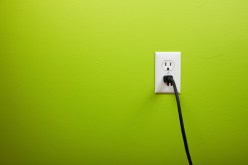A Step-by-Step Guide to Setting Up Your WiFi Panorama Camera
Are you ready to capture stunning panoramic photos with your new WiFi panorama camera? Setting up this advanced photography tool may seem daunting at first, but fear not. In this step-by-step guide, we will walk you through the process of setting up your WiFi panorama camera, ensuring that you can start capturing breathtaking wide-angle shots in no time.
Unboxing and Assembling Your Camera
Before diving into the setup process, it’s essential to unbox and assemble your WiFi panorama camera properly. Start by carefully opening the packaging and removing all the components. Typically, a WiFi panorama camera kit includes the camera body, lens attachments, battery pack, charger, memory card, and user manual.
Begin by attaching the lens to the camera body following the manufacturer’s instructions. Once assembled, insert the battery pack into its designated slot on the camera body. Ensure that it is securely in place before moving on to the next step.
Connecting Your Camera to WiFi
Now that your camera is assembled and ready for action let’s move on to connecting it to your home or office WiFi network. This step is crucial as it will allow you to remotely control your camera using a smartphone or computer.
Firstly, power on your panorama camera by pressing and holding down the power button until it lights up. Next, access the settings menu on your camera’s display screen or through a dedicated app if provided by the manufacturer.
Within the settings menu, locate “WiFi” or “Wireless Network” options and select them. The camera will then scan for available networks in range. Choose your desired network from the list and enter its password when prompted.
Once connected successfully, a confirmation message should appear on your screen indicating that your WiFi panorama camera is now linked to your home network.
Configuring Camera Settings
After connecting your panorama camera to WiFi, it’s time to configure the camera settings according to your preferences. Access the camera’s settings menu again and explore the various options available.
One crucial setting to consider is the image resolution. Panorama cameras often offer several resolution options, allowing you to balance image quality and file size. Higher resolutions will produce sharper images but result in larger file sizes, which may impact storage capacity or transmission speed.
Additionally, take a moment to familiarize yourself with other essential settings such as white balance, exposure compensation, and shooting modes. Experimenting with these settings will enable you to capture panoramic photos that match your artistic vision.
Capturing Stunning Panoramic Shots
Congratulations. You have successfully set up your WiFi panorama camera and configured its settings. Now it’s time for the fun part – capturing stunning panoramic shots.
Begin by finding a picturesque location with a wide field of view. Mount your panorama camera on a tripod or secure surface for stability and adjust the lens angle as desired.
Using either your smartphone or computer, open the dedicated app or software provided by the camera manufacturer. This interface will allow you to remotely control your WiFi panorama camera, including adjusting settings and triggering the shutter.
Experiment with different shooting techniques such as panning horizontally or vertically while keeping the camera level. Remember to maintain consistent overlap between each shot for seamless stitching during post-processing.
Once you have captured all desired images, transfer them from your panorama camera’s memory card to your computer for further editing and stitching using specialized software like Adobe Photoshop or Lightroom.
With practice and persistence, you can master the art of capturing breathtaking panoramic shots using your WiFi panorama camera setup. So grab your gear and start exploring new horizons through wide-angle photography today.
This text was generated using a large language model, and select text has been reviewed and moderated for purposes such as readability.





